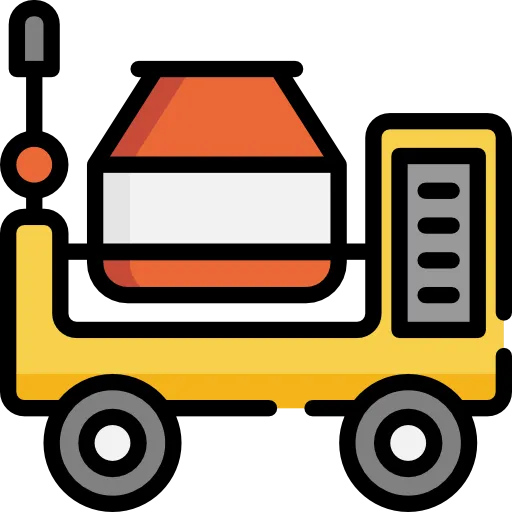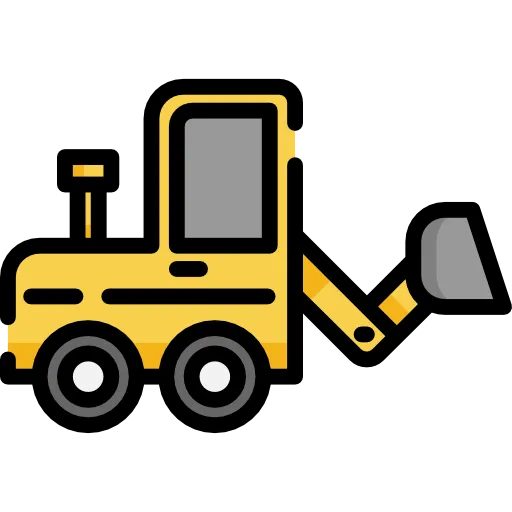
What are Grading and Excavating and Why Do They Matter in East Texas?
“Good buildings come from good people, and all problems are solved by good design.” - Stephen Gardiner
Introduction:
A thorough understanding of grading and excavating can help to push your construction projects to a higher level in East Texas. These processes are about preparing your land by carrying out such tasks as leveling surfaces and digging more fundamental parts such as foundations, thus giving you a sense of stability of the site and the safety of the area. By managing water flow and soil conditions, you avoid erosion risks and therefore, these are indispensable for the success of construction projects in your area.
We serve Van Zandt County, Smith County, Kaufman County, Anderson County, Henderson County, Wood County, Rusk County, Gregg County, and Cherokee County

Key Takeaways
1. Grading is a crucial part of the process of leveling the ground so that proper drainage and stability can be ensured, which is especially important in relation to the variety of terrain in East Texas.
2. Excavation is a very important stage involved in the preparation of sites for foundations as well as utilities, and thus we can avoid the emergence of dangers and can guarantee the survival of the structure during all the construction projects.
3. Both, on the one hand, the grading and, on the other hand, the excavation processes are to be accomplished by the professionals in order to profit from adjusting to the disordered soil conditions, as well as achieving viable solutions for environmental sustainability.
1. Understanding the Fundamentals of Grading
A complete and thorough knowledge of grading is what is required for every member of the construction crew in East Texas. This is the process of taking up the reserve and preparing of the land in such a way that the designer's design requirements are met and thus the surface is ready for building. The correct grading not only brings ease to the appearance of the site, but it is also vital for water drainage and soil compaction which are the keys to structural integrity and life.
2. Definition and Basic Principles
Regrading operation is the procedure wherein the ground is made to be shaped in various ways so that the needed elevation and slope are reached. Main target here is to make a surface that is strong and non-absorbent yet gentle enough to support the building process, and at the same time keep water from gathering, which often causes erosion problems and structural failures.
3. Types of Grading Operations
Mostly all the grading operations can be classified into several types, which include: Cut and Fill Grading Trenching (the process of removing soil from one area and using it to fill another) and filling are the main excavation and embankment activities that method. Rough Grading method is given. It is given that the rough grading is the first step in shaping the land which establishes the basic contours. Fine Grading: It is the process of grading for accuracy to guarantee flawless surfaces. Slope Grading Design a slope that can easily convey water out of the area and at the same time, it does not erode Landscaping Grading for aesthetic improvement and site functionality. Nonetheless, any grading work which is a little different from the usual procedure we do may cause fatalities or other accidents if the procedure is not well executed. Moreover, the knowledge of various grading is essential for the outcome of the project. A similar project can have different grading techniques based on what the requirements are.
For example:
Surface Grading The process of setting a road by laying the foundation and leveling it is called surfacing road which is nothing but the road construction type. Excavation Grading Some of the differences between these polar opposites are that one furnishes material to the other which also removes it. Compact on Grading Compaction process provides a tight bond of soil particles in which the resistance to deformation and movement are dramatically increased. Subgrade Grading The general grading of a site provides the ability to build the most level and stable "base" to build upon. Trenching Grading The last method of "grading" employs a trench to direct the water away while graded and compacted materials are used as the trench base. Every type of grading operation should be carefully designed to ensure project specifications are met and safety is ensured.

4. Equipment Used in Grading
Among the important equipment that you should get from the beginning of a grading project, the ones that are most vital is a bullock plow, a grader, and an excavator; all these equipment do the specific tasks to get the accurate results. Equipment is an important factor for grading operations which can significantly impact project efficiency and quality otherwise. By using bulldozers, we will be able to move soil in massive amounts to huge distances and it will be done quicker, while graders are particularly useful in leveling surfaces with precision. Moreover, they have a versatile skill for excavation for foundations of different depths. The right use and care of this equipment can limit the dangers that workers face and also improve safety on construction sites.
5. The Science of Excavation in East Texas
It is no longer a mystery that the site-specific method of excavation in East Texas, being now revolving around its soil and geological features, tool the soil and the formation nature. The knowledge of these factors is a must- for safe and adequate excavation processes that will be consistent with the construction project key milestones.
Soil Composition and Characteristics
Other than the above determined point, the soil composition in East Texas is another factor that influences excavation works. Aside from clays and loamy soils that are commonly found in the area, other materials such as gravel and sands can heavily influence the soil stability of your building foundation as well as drainage. A serious scrutiny on the soil composition and characteristics shall help you in the right decisions on excavation.
Geological Considerations
About the issue of excavation, the praiseworthy thing among others is the local geology, as it is the one that calls for consideration. Various rock formations can introduce different challenges to the excavation process. For instance, a landslide can disrupt the excavation process, and yet some are not very dangerous but equal attention should be given to all. The geologic variation should be a requirement for a smooth journey in the guide toward excavation.
Doing digging in areas with shifting ground layers can be something rather difficult. A meticulous geological profile of East Texas is a surefire way of ensuring that you are prepared for the hazards that might pop up, such as subsidence or unexpected rock formations, which could be either a reason for the prolongation of the project or incurring extra costs. The involvement of the geotechnical experts in the process can assist you in reducing the identified risks.
Environmental Impact Assessment
Another determinant of the success of an excavation project usually is the composition of the surrounding environment. Carrying out a comprehensive environmental impact assessment is the best option to safeguard local ecosystems when you are busy with the construction of the project. Therefore, to think about and analyze the potential environmental effects of the excavation is multifaceted and at a level ecological viability, and soil erosion, habitat disruption, and water quality are issues that need to be the part of the process. Your attention to it will let you put into place the necessary measures that will be both a requisite to the set of rules and a positive aspect in relation to the community and the sustainability of the project site. The application of effective planning will result in minimal disruption, guaranteeing the observance of safety parameters and overall project success.
6. Regional Challenges in East Texas
Once again, grading and excavating in East Texas comprises difficulties that are unique due to its diverse composition of land and a large number of soil conditions. To stay afloat in a location distinguished by overwhelming clay areas and drainage issues, it is crucial to get insights into regional issues that might present during the project and how to overcome them after understanding them thoroughly.
Soil & Drainage
Clay Soil Management
Not many people know that behind the picturesque landscape of East Texas lies a sizable grading obstacle, namely, clay soil. This type of soil decompresses when wet and compresses when dry, so it is essential for the overall stability of your site that you follow specific management guidelines to prevent foundation issues.
Drainage Concerns
In addition to the previously mentioned problem with clay soil, drainage issues are posed as important when it comes to the moving of earth in the East Texas area. The correct water operating techniques play a great role in making your construction site survive not only the weather but the risk of erosion that can be caused by all actions in the process of building. When the soil is washed off the project area, the structural integrity of your project will be at risk, which will lead to unexpected expenses and delays. Proper inclination combined with the installation of solid drainage systems has the potential to significantly lessen such risks, thus ensuring a higher degree of security in your construction site. Neglecting such issues would lead to severe consequences like damages to your buildings and increased site maintenance. Therefore, the first step of a successful project should be directed to a good drainage plan.
7. Local Permits and Requirements
One very first and most important thing to do in East Texas regardless of where you are is to obtain local permits for either grading or the excavation process to have a better way to get off the ground. every city, and different areas may have their specific law, yet we can generally tell that it may be about land preparation, safety measures, and the material or method of construction should be chosen in a certain way to minimize the impact on the environment. Moreover, as the natural environment is affected, local people need to be safeguarded as well through various strategies and measures which may include traffic control, fencing of the area, etc.
8. Site Preparation Techniques
Only a few site preparation techniques can pave your way to a smooth and congestion-free construction process; the others fail to do so. In East Texas, where terrain conditions present a wide range of challenges concerning grading and excavating, the snowballing of those methods related to the land can be highly favorable to the faster and safer excavation process through your personal land design. The site designers Boule from the marsh with various methods permit you, at least, to plan so that your construction project starts on a rock-solid foot.
9. Land Clearing Methods
The principal task you need to do before any other construction work begins is the efficient clearing of land. This process requires the removal of vegetation, debris, and most of all impediments that have been standing in your way for your grading and excavation project. Through the use of such aids as bulldozers, excavators, tree mulchers, proper earth-moving takes place.
Topographical Surveys
Together with land clearing, topographical surveys are indispensable primary guides for analyzing the infrastructure of your construction site. The topographical surveys give the user all the key features tracked as elevation (the high or low part), slope, and drainage directions.
Normally, this type of information directs the planner for how the site is to be graded, which mostly includes the excavation of soil and leveling of land. Indeed, topography surveys result in detailed information which can assist you in making site preparations and other crucial decisions. They help you spot water flow issues or elevation changes early, enabling you to solve the problem efficiently, maintain correct drainage, and stability of the site. This brief summary is the key to mastery of your construction project in East Texas.
Soil Testing Procedures
Soil testing methods are not only the best method of achieving the goal of your particular construction, but they are also very useful. In a consistent manner, the soil should be examined for content, water resistance, and strength for its support for the desired structure. The soil testing that is done properly is something you can use in helping to avoid the issues that can come about later and get the insights needed for several things such as grading and excavation.
A complete soil testing program is a tool with which you can grasp the nature of your site, notably at East Texas, where the soil type can be highly different. With a careful look at the subsurface soil layers, you can reveal risks like soil behavior that can behave unpredictably and water drainage that is not good so you can apply solutions such as soil stabilization and engineered fill. This way you are secured of the proper groundwork for your project's completion.
Drainage Solutions
Many, in fact, inadequately underrate the effectiveness of the draining system in East Texas. The rightful grading and excavation are the main mechanisms by which the water runs off away from sites of construction which in turn will lead to the reduction of potential flood and hence the preservation of structural integrity. By deciding to buy the drainage solutions offered by specific companies, you also ensure the integrity of your possessions and thus your peace of mind concerning the longevity and safety of your property.
Surface Water Management
Properly functioning a surface water management system is crucial in proper rainwater runoff control. Through the various grading techniques, you can make water flow in a way that is natural without man-made facilitation, thus preventing pooling of water and safeguarding your foundation. In this way, it is both a timely measure for avoiding expensive repairs and healthcare risks caused by water injuries.
Erosion Control Systems
Mostly, rain gutter lines address soil erosion by helping soil to absorb the water so it doesn't flow away with the rain storms. These installations are designed with regard to silt fences, sediment basins, and plant life designed to absorb the overflow causing problems. The correct application of them is your protection from site instability and proper soil nurturing areas. Properly functioning erosion control systems play a vital role in determining the durability of the building project. An example of how silt fences and vegetative barriers can conserve soils and act as of eco-friendly landscapes is greening the site and giving it a healthy appearance. Buy them and you will pay once but maybe save a little money on long-term maintenance and extend and improve your site quality.
Stormwater Infrastructure
For one to solve the problem of stormwater runoff and allow water handling, they must see to it that a very resilient stormwater infrastructure is in place. They can use grading lines combined with drainage furrows and retention ponds that apart from other places make the rainwater flow away from the places that need protection. If you want to find out how stormwater infrastructure relates to your grading plans and thereby prevents flooding and drainage issues, using methods like retention basins and a permeable pavement could be a good idea. In addition to good stormwater management, you also contribute to the better environmental conditions through the use of the above-mentioned techniques. It is important to correctly plan and execute the project, as this can bring about the need for even more expensive repairs, as well as lead to a more sustainable community in East Texas.

10. Equipment and Technology
During the process of construction, when one understands the problems they might build - grade, and excavate, it is a critical moment to look at the newest equipment and technology that can make those processes much faster and more accurate. Using the right equipment is the key to making site preparation easier and less risky in East Texas, which in turn will lead to better results in your construction projects.
Modern Machinery Overview
Not only bulldozers, excavators, and backhoes but also a wide range of modern equipment are used for grading and excavating. This equipment provides the force and the precision that are essential for shaping the land very efficiently thus automating the necessary maximal labor and time in these activities besides constructing a solid and level foundation for your construction campaign.
GPS and Laser Grading Systems
With the expanded use of GPS and laser grading systems, the way grading duties have been done has seen a fundamental shift. Their primary function is to capture the most accurate slope or elevation measurements, which are important, as they prevent wrong grading thus not having to redo the work which is a whole lot of expensive cost and time .
Moreover, by taking advantage of GPS technology, a very precise level of accuracy can be achieved in your grading projects. The systems change the machine's blade height automatically, thus the soil compaction and stability will be the best that any of the options. This process is not only more efficient but also the final competition is enhanced by the overall quality of your construction work, which in turn reduces the probability of related uneven terrain issues.
11. Software Applications
Due to the increased use of software applications that are particularly made for grading and excavation, the construction of your projects will reach a higher level of perfection. Users have the opportunity to get the necessary tools for the planning, design and project management tool, which will make it possible for you to use your resources more effectively since these tools are the fundamentals. Grading software simply helps you to see the plot of the land and make several sketches of different grading scenarios. You can then decide which scenario will be the right one to work on. These tools not only can help in project cost tracking but also they can contribute to project progress which in turn will lead to the success of the projects. This tech claim will bring home to the developers, as it will facilitate a streamlined and more effective approach to the construction process.
Residential Applications
While commercial sites require a standard approach, residential grading still needs your individual input to form it according to your landscape and construction needs. The works of this nature are very important in the way they manage changing the land, drainage optimization and other steps that are essential for the formation of a safe and functional property around your home in East Texas.
Home Site Preparation
The involvement of grading and earthworks is crucial when one wants their building site perfectly prepared for execution. The first step is to level the ground so it becomes ready to support your house foundation, which in return ensures rebuilding after flood are avoided as you create necessary drainage systems and plan an easy way for vehicles and machines to get to the building.
Landscape Grading
Moreover, the landscape grading can be defined as a method through which the strength and elegance of your yard would be increased one step further. It is along these lines that the grading technique comes into the picture, where water is channeled correctly thus preventing erosion at the same time it creates attractive outdoor spaces. The same way this process gives a neat look to the garden, it also assures that these pieces will be viable for many years to come in addition to as the aesthetic look as the psychological part of it. So as to make your top followers, it is critically important to make a substantial investment in grading services. Frankly speaking, it can result in draining problems or monitoring the structural components of your building. If you model the land with precision and are aware of the water flow, the area will be both a playground and a garden.

12. Foundation Requirements
But properly graded pieces of the foundation including around plumbing, utilities, etc. are one of the important measures to be taken into consideration on construction. The flat grid of the soil is mainly what is going to make your construction have the mentioned attributes. It also depends on the type of soil, proper grading can improve the preparation of the soil and the correct amounts of moisture can be achieved in the region of East Texas. Data for your foundation requirements can be secured if you provide a gradient that is done properly, and thus, your foundation will be the most stable during construction. The key thing to do with compelling foundations is to ensure proper re-engineering, which is bill 4 along with other methods is engaging. Site preparation for your foundation is vital to ensure settlement issues do not crop up later and your house remains safe and sound. Ignoring the soil conditions can force one to incur repairs along the line, and it can be very costly.
13. Commercial Projects
In commercial construction in East Texas, grading and excavating are very important to ensure safe and functional spaces. When your commercial projects are perfectly handled in a wise way of grading and excavation, the results will be a well-founded success. The negligence of these operations may result in the viability and fortitude of your buildings being affected and thus entail the expensive aftermath later on.
14. Large-Scale Development Considerations
Some specific things to consider about large-scale developments are the assessment of the terrain, drainage capabilities, and soil conditions. One must analyze these parameters to stay on track with the construction timeline and the available budget. Project planning and ground works carried out will help reduce the chances of any incidents occurring, thus you will be able to meet both safety and efficiency.
Parking Lot Grading
A good start to a commercial project is to do the parking lot grading wisely, which is directly linked with the cleanness of the place and various functions that it might have. The appropriateness of leveling is what keeps rainwater away from your premises by evading chances of flood and erosion. Commercial parking lot redevelopment is one of the essential things to do in the urban area. Decent road grading creates a flat surface that does not tear the vehicles and the positive effects of a better road contribute to the decrease in potholes. To keep your investment protected and allow customers an attractive space of successful parking, allocate money to quality grading. Proper and efficient grading also prevents the accumulation of water, which is the cause of immense damage to the structure in the long run.
Commercial Building Pad Preparation
The major point to grasp is that a good mixture of materials will result in an excellent commercial building pad. It opens up a base that can bear the load of your building as well as the equipment and materials involved. Construction sites where the building pad is being prepared with extreme measurement and manipulation are well constructed and smooth even surfaces are visible. Properly done this method is critical in that failing to do so can cause settling or structural instability. Preparing the building pad accurately means beginning with a good foundation for your commercial development.
Infrastructure Development
East Texas will only produce good results in its area infrastructure development if it uses the right grading and excavating technologies. In fact, these activities are foundational steps in the life of infrastructure works that assure safety and stability as well as the minimum time required to complete the projects.
Road Construction
On-time grading a good road is crucial for road construction that happens on East Texas roads. The correct grading of a road ensures that the elevations in the roadbeds are precisely set, thus the possibility of flooding is minimized and the safety of the car drivers are increased.
Utility Installation
Furthermore, it is the road construction projects which are in need of proper utility installation procedures so as to avoid the negatives like water, electricity, and services that are misconfigured and diverted from the proper locations. Therefore, you can gain knowledge of the importance of appropriate grading and excavation throughout utility installation to avoid such costly stoppages. In order to prevent damage to existing lines such as depth and alignment has to be exact, also, appealing professional help will give you the necessary advice on how to detect and correct the potential threats to the above safety measures. If confirmed shortcomings occur, a qualified professional should be sought to rectify them. Safety issues must be first and foremost in the workers before any job is done.
Public Works Projects
A crucial element of the success of public works projects in East Texas is a proper grading process that will ensure the safety of the workers and the infrastructure of the community. These projects are the foundation of community infrastructure and therefore must be carefully planned and elaborated to ensure their safety and operability. Utility operations are the most important elements of public works projects as they are associated with risks that could result in potential delays and safety problems. Through acquiring professional grading and excavating services, you can safeguard all your projects and get them done efficiently and successfully so that your community can benefit from the good work done by your company and you will be a big part of the change.
15. Sustainable Practices
Different methods of grading and excavating that will be used to minimize the environmental footprint, employ those which will be most efficient. One of the main aspects of sustainable practice is to use resources more efficiently. Consequently, you should minimize, conserve resources, and minimize your impact in order to achieve optimal construction results. Have you been making an effort to meet the demands of the environment? If not, keep in mind the fact that sustainability can bring environmental, operational, and customer satisfaction to a higher level. Indeed, the integration of sustainability in your projects can offer you numerous benefits including reduced operational costs and community support. Tools like minimal disturbance grading and the use of locally sourced materials help facilitate your construction concerned activities in the realms of environmental stewardship. This intentional mindfulness and concern for sustainability is a strong ethic that heightens the standards set in the grading and excavating industry.
16. Cost Analysis and Project Planning
Nevertheless, if grading and excavation projects are laying out very complicated pieces of work, a properly visual cost analysis and project plan can easily help you to reach your goals in East Texas. Not only does knowing these help in the management of costs, but it also guarantees that the resources are used appropriately, timelines are met and hitches come up with a better way of dealing for one to stick to the plan.
17. Budgeting Considerations
Behind a flawless grading and excavation project is a meticulously drafted financial report that is inclusive of not just labor but also all the other costs including work, materials, and equipment. Aged for a budget you will be obstacles that could fail to kick off projects be ruled out and this exercise will give you confidence that the project will be completed within the budget.
Timeline Development
Give a budget, and then develop a timeline in such a way, so that all the crucial work stages (like grading and excavation) are scheduled properly.. Proper arrangement will enable you to figure out any obstacle lying ahead as a result of bad weather or other weak spots from the start of the project. Small interruptions can sniff out your plan significantly. To be on the safe side, add breaks in your schedule for events of unexpected situations like soil anomalies or the accident of buried cables in clearing and digging assignments.
Resource Allocation
In order to keep an un-complicated workflow by using the best resources for your grading and excavating project, you should focus more on allocating resources really well. The most basic thing to take care of required for a good project is having men well trained and the correct equipment at the place of work; thus, it stands to reason that having these parts on hand will raise the efficiency to outstanding rates. Timeline management is an important element of resource allocation. By carefully planning the deployment of equipment and manpower, you can increase productivity and downtime to a minimum, hence ensuring the successful progression of your project. Constructive resource allocation not only reduces expenditures but also heightens the safety level on site by fixing a traffic jam and making actions on grading and excavation smooth.
Safety and Risk Management
Safety and risk management are two of the main issues of all the constructions in East Texas, mainly during grading and excavating processes. The tasks to be carried out involve risks such as equipment accidents or subsurface conditions that are unexpected Bus prioritization of safety rules can minimize risks to a great extent and a working environment will be a secure place for those involved in the construction activities.
Maintenance and Long-term Care
Contrary to other discussions on construction, grading, and excavating are recurring tasks that ensure the longevity and solidity of your site long after the initial construction is done. Regular inspections will be able to detect and fix any problems such as soil erosion or settling which will enable you to maintain proper drainage and prolong the lifespans of your infrastructure. Time will be required for you to impose preventive rules that will protect your investment and guarantee the success of future projects.
Post-Construction Monitoring
Monitoring of your construction site should not stop at the end of the grading and excavation project. To be sure that your site is still safe and functional, it is essential to make post-construction monitoring a part of the project. It involves frequent checking and recording of the consistent segments in the soil profile, thus, it keeps the site in a safe and operational condition.
Erosion Prevention
Another threat supposed to interfere with the stability of your construction site is erosion. The use of certain strategies in this respect can definitely help the developers to manage the erosive soil condition. These strategies include the installation of vegetation and the use of mulch for soil protection in case of heavy rain or a storm. This is actually the basic choice for retaining the desired grading and contour, it even prevents the soil from being washed by rain over time. The ultimate benefit of including erosion prevention techniques in the budget is the preservation of the natural environment, which means the long-term viability of your project will be guaranteed.
Table of Contents:
What are Grading and Excavating and Why Do They Matter in East Texas?
1. Understanding the Fundamentals of Grading
2. Definition and Basic Principles
3. Types of Grading Operations
5. The Science of Excavation in East Texas
Soil Composition and Characteristics
6. Regional Challenges in East Texas
7. Local Permits and Requirements
8. Site Preparation Techniques
14. Large-Scale Development Considerations
Commercial Building Pad Preparation
16. Cost Analysis and Project Planning



















